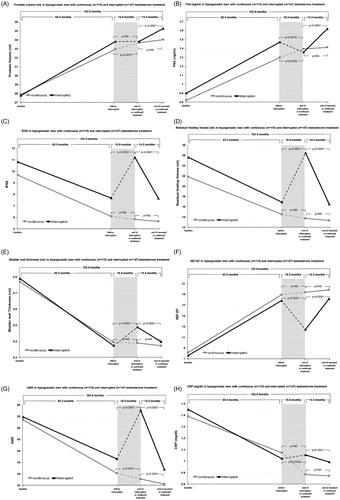Figures & data
Figure 1. Hypogonadal men (mean age 59.5) underwent testosterone replacement therapy (TRT) for a maximum of 11 years. Group A had TRT interrupted for approximately 1.5 years and resumed thereafter. Group B were treated continuously. Prior to interruption, TRT resulted in improvements in residual voiding volume, bladder wall thickness, C-reactive protein (CRP), aging male symptoms (AMS), International Index of Erectile Function (IIEF-EF) and International Prostate Symptoms Scores (IPSS) and obesity parameters while prostate-specific antigen (PSA) and prostate volume increased. TRT interruption reduced total-testosterone to hypogonadal concentrations in Group A and resulted in worsening of obesity parameters, AMS, IPSS, residual voiding volume and bladder wall thickness, IIEF-EF and PSA while CRP and prostate volume were unchanged until treatment resumed whereby these effects were reversed. In Group B, parameters continued to improve throughout or remained the same during the equivalent interruption and post-interruption periods. Group A, n = 147; Group B, n = 115.

